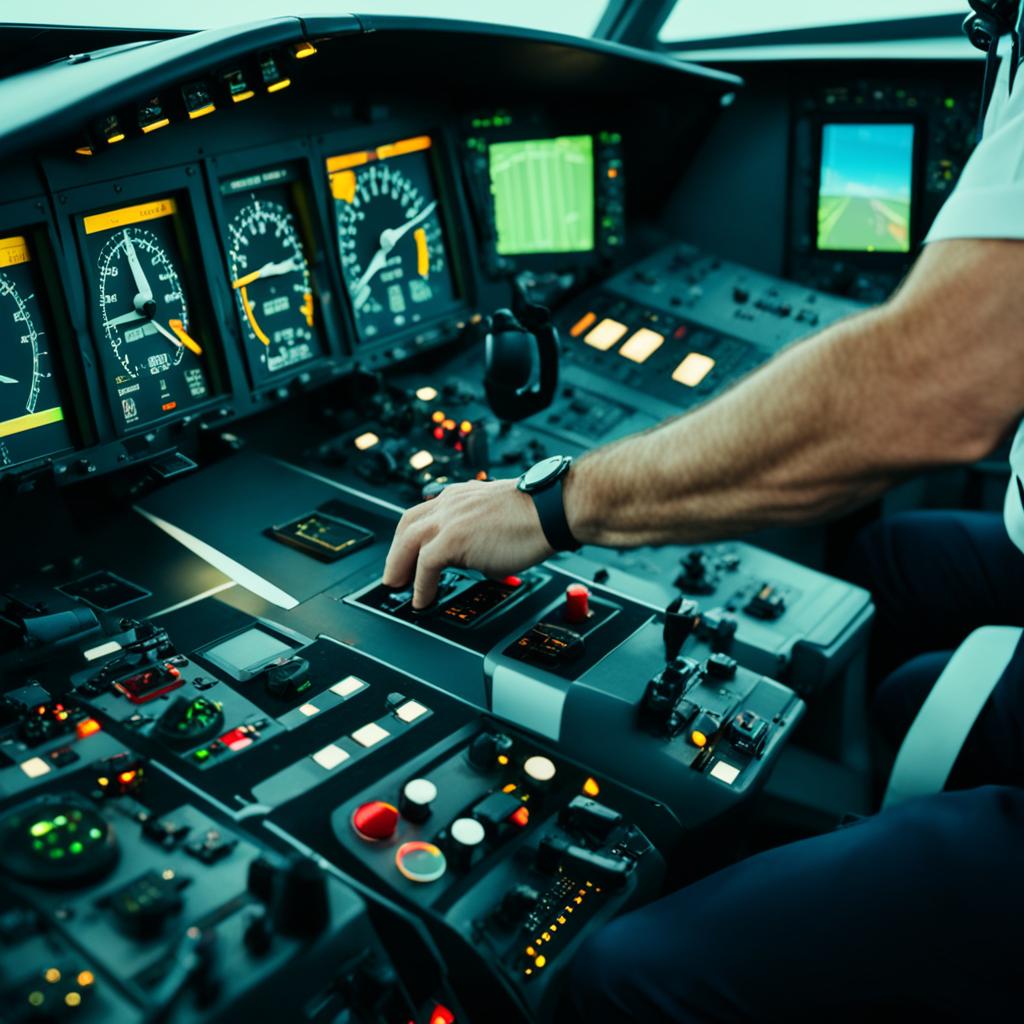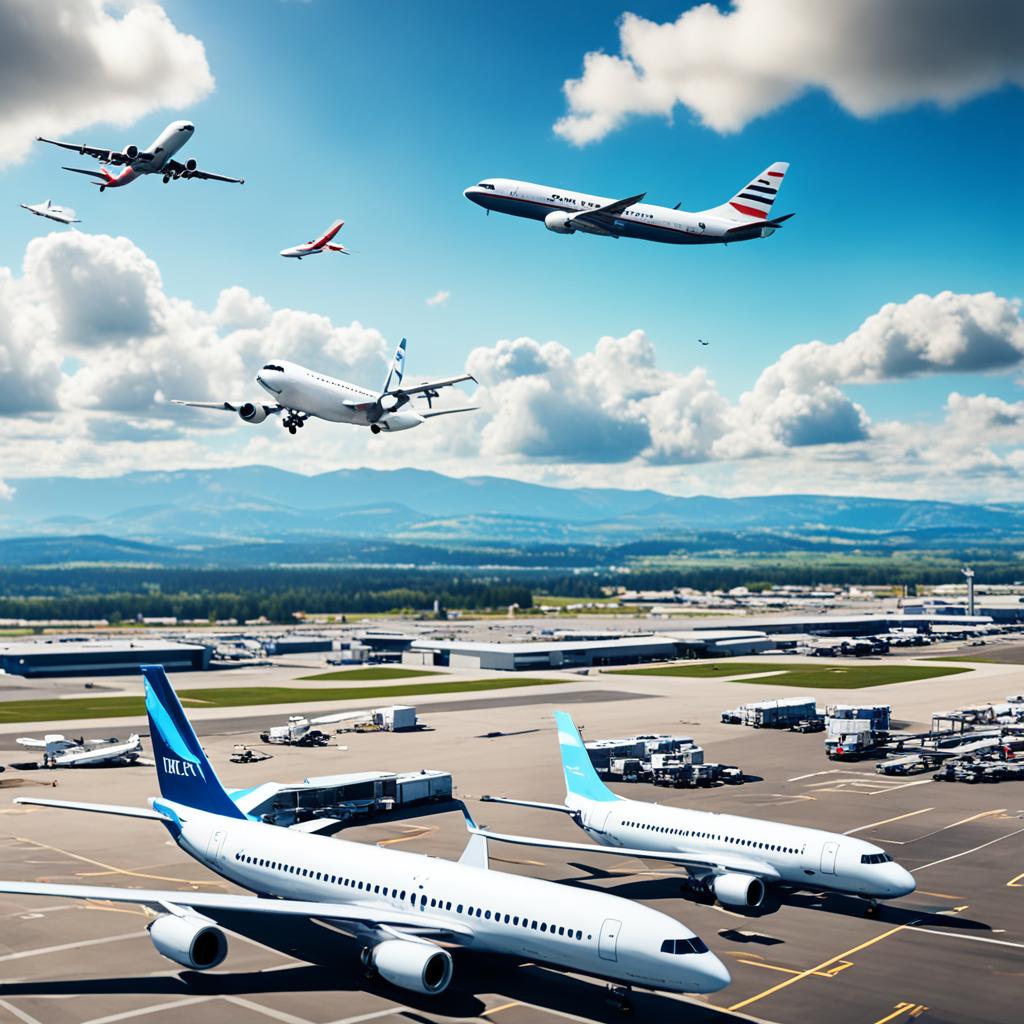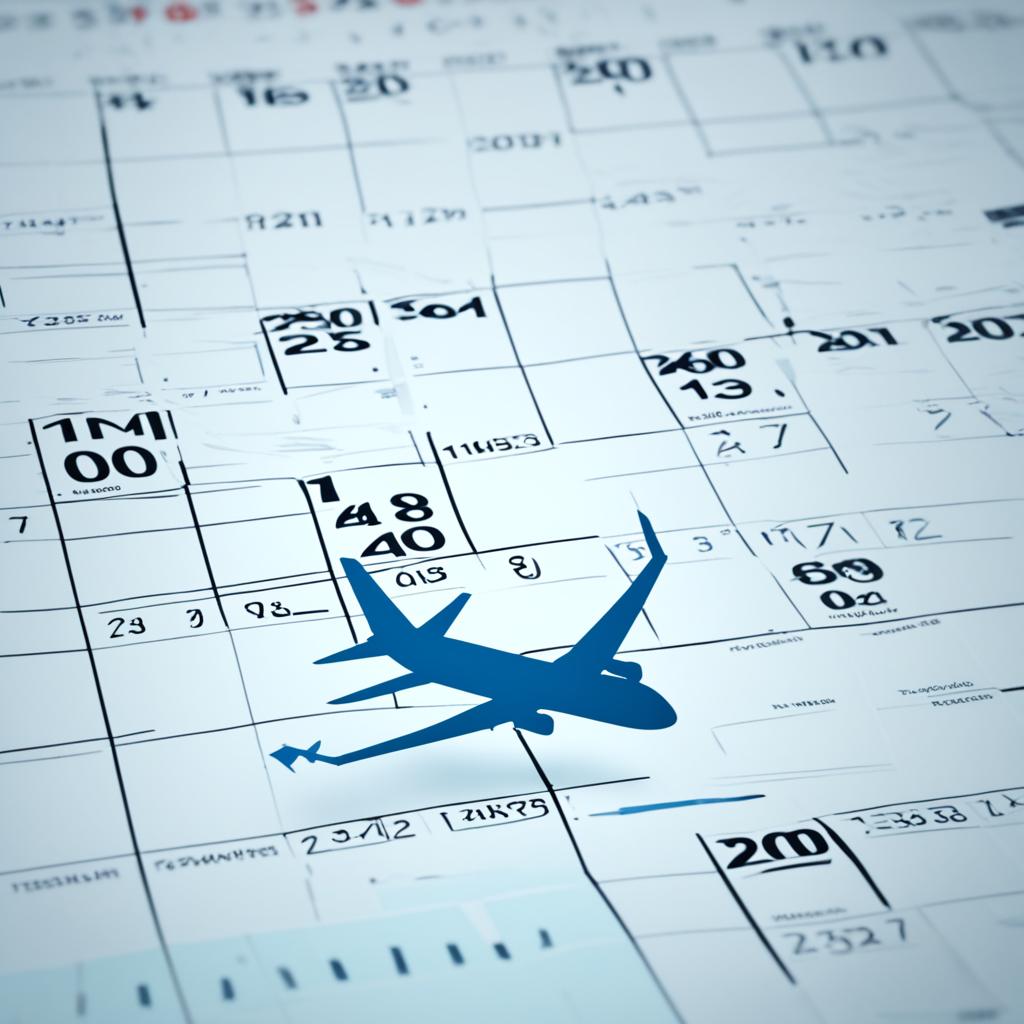Have you ever wondered how long it takes to accumulate the coveted 1500 flight hours needed to advance in your aviation career as a Certified Flight Instructor (CFI)? The journey to becoming an airline pilot is an exciting one, but it requires dedication, time, and a clear understanding of the process involved. In this article, we will explore the timeline, flight requirements, and strategies to accelerate your flight hour accumulation as a CFI. So, let’s dive in and find out!
Continue reading to discover the timeline for becoming an airline pilot, the flight time requirements set by the FAA, the role of a CFI in building flight hours, and strategies to accelerate your flight hour accumulation. We will also delve into the importance of the Airline Transport Pilot (ATP) certificate and the impact of the 1500-hour rule and R-ATP requirements on pilot safety. Get ready to embark on an exciting aviation career journey!
The Timeline for Becoming an Airline Pilot

The journey to becoming an airline pilot is an exciting and challenging one. It involves a series of steps and milestones that you will need to accomplish. Understanding the timeline and the various stages of flight training is essential for aspiring pilots. Here is an overview of the typical timeline for becoming an airline pilot:
- Earn your private pilot license: The first step in your journey is to earn your private pilot license. This typically takes about three months of training, during which you will learn the fundamentals of flying and aviation regulations.
- Continue flight training: After obtaining your private pilot license, you will continue your flight training to gain additional experience and build your skills. This includes earning a commercial pilot certificate, which usually takes around six to eight months.
- Become a Certified Flight Instructor (CFI): Many aspiring airline pilots choose to become CFIs to accumulate the necessary flight hours. Becoming a CFI allows you to gain experience while teaching and mentoring other pilots. This phase can take about six to twelve months.
- Accumulate flight hours: The next step is to accumulate the required 1,500 flight hours to become an airline pilot. This process usually takes around two years, depending on factors such as training intensity, availability of flight hours, and individual goals.
- Obtain an Airline Transport Pilot (ATP) certificate: Once you have accumulated the required flight hours, you can then apply for an ATP certificate. This certificate is the highest level of pilot certification and is necessary to fly for an airline. The process of obtaining an ATP certificate involves passing a written exam and a practical test.
It is important to note that the timeline for becoming an airline pilot can vary from person to person. Factors such as training intensity, availability of flight hours, and individual circumstances can all impact the length of time it takes to reach your goal. However, with dedication, perseverance, and a clear plan, you can navigate the timeline and successfully achieve your dream of becoming an airline pilot.
Flight Time Requirements for Airline Pilots

The Federal Aviation Administration (FAA) has established flight time requirements for aspiring airline pilots. These requirements are in place to ensure that pilots possess the necessary experience and proficiency to safely operate aircraft in various conditions.
As an airline pilot, you will need to accumulate a minimum of 1,500 flight hours. These flight time requirements are broken down as follows:
- Private Pilot License: 40 hours
- Commercial Pilot Certificate: 250 hours
- Airline Transport Pilot Certificate: 1,500 hours
Meeting these flight time requirements is essential for individuals looking to pursue a career as an airline pilot. The FAA regulations mandate that you obtain the specified hours in order to ensure the highest level of safety and competency in your role.
By completing the required flight hours, you will have gained valuable experience in various flight operations and conditions, making you better equipped to handle the challenges that come with being an airline pilot.
The Role of Certified Flight Instructor (CFI) in Building Flight Hours
Becoming a Certified Flight Instructor (CFI) is a pivotal step for pilots to accumulate the necessary flight hours. As a CFI, you have the unique opportunity to teach and train aspiring pilots, and the flight time you log during these instructional sessions counts towards your overall flight hours. Many pilots choose to spend a substantial amount of time as a CFI to amass the required flight hours for a career as an airline pilot.
Being a CFI allows you to share your knowledge and expertise with students, helping them develop essential flying skills and experience. Each flight lesson you conduct contributes to your flight time, accelerating your progress towards the 1,500-hour milestone. By dedicating yourself to flying six days a week and being available for various flight lessons, it is possible to log around 100 hours of flight time per month as a CFI.
During your tenure as a CFI, you not only gain valuable flight hours but also strengthen your own understanding of aviation principles and refine your piloting skills. Teaching and mentoring future pilots demands a deep comprehension of flight procedures, regulations, and safety protocols, further enhancing your qualifications.
Additionally, the role of a CFI fosters professional growth and networking opportunities within the aviation industry. Interacting with students, fellow instructors, and flight school staff can open doors to valuable connections and career advancements in the future.
Ultimately, serving as a Certified Flight Instructor is a mutually beneficial pursuit. You contribute to the growth and development of future aviators while building flight hours that propel your own aviation career forward. It is an essential step on the path to becoming an airline pilot.
Strategies to Accelerate Your Flight Hour Accumulation

If you are looking to accelerate your flight hour accumulation and fast-track your aviation career, there are several strategies you can consider. By implementing these strategies, you can optimize your flight training intensity and expedite the process of gaining valuable flight hours.
- Dedicate full-time efforts to flight training: Consider quitting or reducing other commitments to focus solely on flight training. This allows you to devote more time and energy to your training, leading to more frequent and intensive sessions. By immersing yourself in aviation and dedicating yourself to your training, you can significantly speed up the accumulation of flight hours.
- Seek time-building activities: Look for opportunities to engage in time-building activities that can help increase your flight hours. Examples include participating in banner-towing operations or taking up flight instructing. These activities not only contribute to your flight hours, but also allow you to gain valuable experience and further enhance your skills as a pilot.
- Create a customized training plan: Consult with a reputable flight school or an experienced flight instructor to create a personalized training plan tailored to your goals and aspirations. They can help optimize your training schedule and ensure that you are making the most efficient progress in accumulating flight hours. With a well-designed plan, you can make the best use of your time and resources.
By implementing these strategies, you can accelerate your flight hour accumulation and propel your aviation career forward. Remember, dedication, persistence, and a well-thought-out plan are keys to achieving your goals in the world of aviation.
The Importance of the Airline Transport Pilot (ATP) Certificate
The Airline Transport Pilot (ATP) certificate plays a vital role in the journey of aspiring airline pilots. This certification signifies advanced knowledge, skills, and qualifications, making pilots eligible for employment with airlines. To obtain an ATP certificate, there are specific requirements that pilots must meet:
- Be at least 23 years old
- Hold a commercial pilot certificate with an instrument rating
- Pass the ATP written exam and practical test
- Have a minimum of 1,500 hours of total flight time
The ATP certificate is an essential milestone in a pilot’s career progression, as it demonstrates their proficiency and capability to operate aircraft in a professional airline setting. This certification not only enhances their job prospects but also signifies their commitment to safety, excellence, and professionalism.
The Impact of the 1500-Hour Rule and R-ATP Requirements
The 1500-hour rule, introduced by the Federal Aviation Administration (FAA), has had a significant impact on pilot safety and the standards of flight training. This rule was implemented after the tragic Colgan Air 3407 crash in 2009, which highlighted the need for enhanced pilot qualifications.
The 1500-hour rule mandates that First Officers for airlines must have a minimum of 1,500 flight hours. This requirement ensures that pilots have accumulated sufficient experience, training, and knowledge before operating commercial aircraft. The aim is to improve pilot competency and reduce the risk of accidents, thus prioritizing passenger safety.
However, the FAA also recognizes that pilots can gain valuable experience through alternative routes. For this reason, there are options available through Restricted-ATP (R-ATP) certificates. Pilots who meet specific qualifications, such as holding a bachelor’s degree with an aviation major, an associate’s degree with an aviation major, or possessing military pilot experience, can be eligible for R-ATP privileges.
By incorporating the R-ATP requirements, the FAA acknowledges that traditional flight hours might not always be the sole determinant of pilot competency. The focus is on a comprehensive evaluation of a pilot’s knowledge, skills, and capabilities, ensuring that safety remains paramount in commercial airline operations.
FAQ
Q: How long does it take to obtain 1,500 flight hours as a CFI?
A: It typically takes around two years to accumulate 1,500 flight hours as a Certified Flight Instructor (CFI). The timeline can vary depending on factors such as training intensity, background, and individual goals.
Q: What is the timeline for becoming an airline pilot?
A: The journey to becoming an airline pilot usually starts with earning a private pilot license, which takes approximately three months. To become an airline pilot, you will need to accumulate 1,500 flight hours, which typically takes about two years. This timeline includes gaining the necessary experience and certifications, such as a commercial pilot certificate and flight instructor certificate.
Q: What are the flight time requirements for airline pilots?
A: The FAA requires airline pilots to have a minimum of 1,500 flight hours to fly as an airline pilot. These flight time requirements include 40 hours for a private pilot license, 250 hours for a commercial pilot certificate, and 1,500 hours for an airline transport pilot certificate.
Q: How does becoming a CFI help build flight hours?
A: Becoming a Certified Flight Instructor (CFI) is a common path for pilots to build flight hours. As a CFI, you can teach and train aspiring pilots, which counts as flight time. Many pilots spend a significant amount of time as a CFI to accumulate the required flight hours for an airline pilot career.
Q: What strategies can I use to accelerate my flight hour accumulation?
A: If you are looking to accelerate your flight hour accumulation, you can consider dedicating full-time efforts to flight training by reducing other commitments. Additionally, seeking opportunities for time-building activities, such as banner-towing or flight instructing, can help increase your flight hours. Creating a customized plan with a flight school or instructor can optimize your training schedule and maximize your flight hour accumulation.
Q: Why is the Airline Transport Pilot (ATP) certificate important?
A: The Airline Transport Pilot (ATP) certificate is crucial for aspiring airline pilots. It demonstrates advanced knowledge, skills, and qualifications, making pilots eligible for employment by airlines. To obtain an ATP certificate, pilots must meet specific requirements, including being at least 23 years old, holding a commercial pilot certificate with an instrument rating, passing the ATP written exam and practical test, and having a minimum of 1,500 hours of total flight time.
Q: What is the impact of the 1500-Hour Rule and R-ATP requirements?
A: The 1500-Hour Rule, implemented by the FAA after the Colgan Air 3407 crash in 2009, enhances pilot safety by improving flight training, experience, and knowledge. This rule requires First Officers for airlines to have a minimum of 1,500 flight hours. However, there are restricted privileges ATP (R-ATP) certificates available for pilots who have completed certain qualifications, such as having a bachelor’s degree or associate’s degree with an aviation major, or military pilot experience. These requirements ensure that pilots have the necessary experience and proficiency to safely operate aircraft in commercial airline operations while maintaining a high standard of pilot qualifications.
